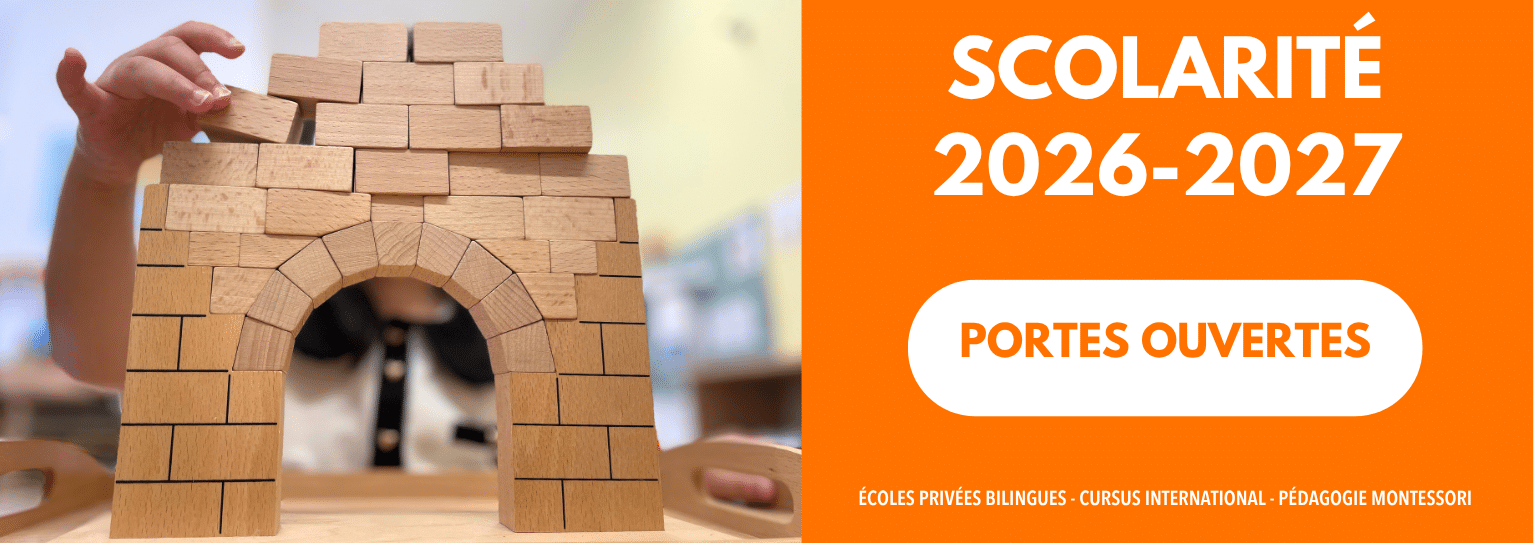Montessori & Singapore, same battle...
Following the results obtained by French pupils in the international PISA survey (Programme for International Student Assessment), it has been proposed to revise French elementary school curricula. This OECD survey assesses a panel of students in four key areas: reading, writing, mathematics and science. Tests carried out on 6,770 pupils from 282 French schools between April and May 2022 show that 29% of pupils are struggling in mathematics, compared with just 7% who are high achievers. The French Ministry of Education therefore intends to gradually adopt the Singapore method, which has proved its worth in many countries and is very popular with teachers. This method is very similar to the Montessori pedagogy we apply in our bilingual nursery schools and private crèches at 123 mon école.
Although these methods have different origins and focus on specific aspects of learning, they share many common features _ their effectiveness and their commitment to the child's overall development _ and have many similarities.
A child-centered approach "Education is a natural process in the child, acquired not by words but by the experience of his environment." Maria Montessori
Both approaches place the child at the center of the learning process. They recognize and respect the individual rhythm of each pupil, promoting fully personalized learning. Both Montessori and the Singapore method encourage teachers to carefully observe each student's needs and adapt their teaching accordingly. Both approaches recognize the importance of meeting each student's individual needs, enabling each to progress at his or her own pace. Creating a positive and stimulating learning environment, where students can actively explore and learn, is the essence of both approaches.
The manipulation of concrete objects "Through materials, the child learns to work on his own improvement." Maria Montessori
Montessori and Singapore share the idea that children learn best by manipulating concrete objects. Montessori uses specific, concrete teaching materials to teach abstract concepts, while Singapore encourages the use of visual, tangible approaches to reinforce mathematical understanding. Both methods recognize the importance of sensory experience in the learning process: the quality of the materials chosen and consistent hands-on time are at the heart of both pedagogies' priorities.
Both approaches advocate moving from the concrete _ manipulating objects _ to the pictorial _ with visual representations _ and finally to the abstract _ with mathematical symbols and numbers.
Encouraging independence "We must make powerful men for future generations, that is, independent and free." Maria Montessori
Both pedagogies emphasize the development of independence in children. Montessori fosters autonomy by providing a carefully prepared environment where children can choose their activities, while the Singapore method fosters autonomy by encouraging students to solve problems independently, by searching, groping, reflecting and making mistakes. Both methods aim to develop children's self-confidence and initiative. The right to make mistakes is also an integral part of the process of understanding and memorizing.
Learning through discovery "Everything that brings the child into contact with reality and allows him to experience the elements of his environment brings him an understanding of things and removes the disruptive state of fear." Maria Montessori
Montessori and the Singapore method both promote learning through discovery. Montessori encourages children to explore and learn for themselves, while Singapore uses problem-solving approaches to stimulate critical thinking. In both cases, the aim is to develop children's ability to think independently and apply their knowledge in practical, concrete, everyday ways. Indeed, repetition is a key element in the lasting integration of concepts learned in the classroom.
Continuous assessment "The true duty of the teacher is to help, not to judge." Maria Montessori
Both the Montessori pedagogy and the Singapore method emphasize continuous assessment rather than one-off evaluations. Montessori educators continuously observe students to assess their progress. Teachers who have adopted the Singapore method focus on formative assessments to understand their students' potential difficulties and adapt their teaching accordingly. Continuous assessment makes it possible to closely monitor each child's development and adjust teaching approaches according to his or her specific needs. Both approaches advocate pedagogical remediation.
These PISA results will continue to improve in the future, thanks to the passionate and professional teachers who accompany our students on a daily basis, and who have Maria Montessori's words well in mind:
"Nothing is so important to the child as the need to feed his hungry intelligence and offer a vast field of knowledge for his passionate exploration."



